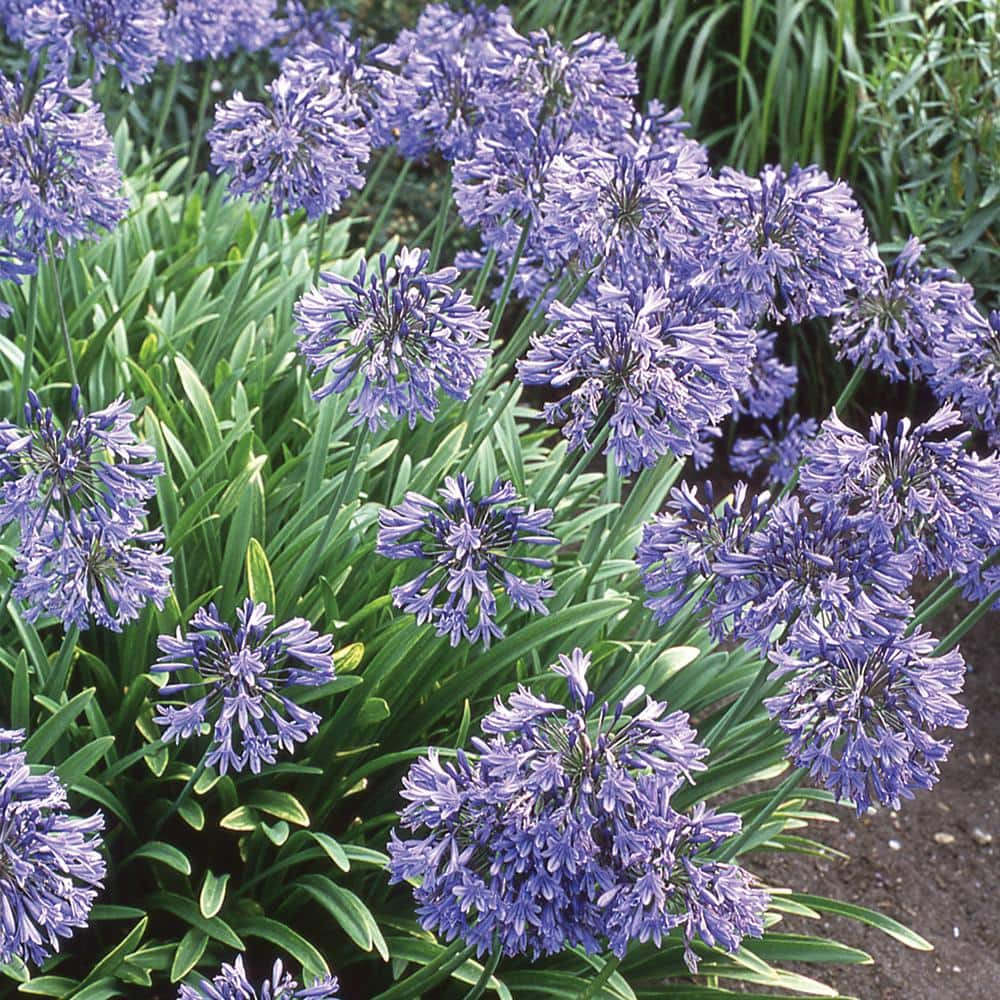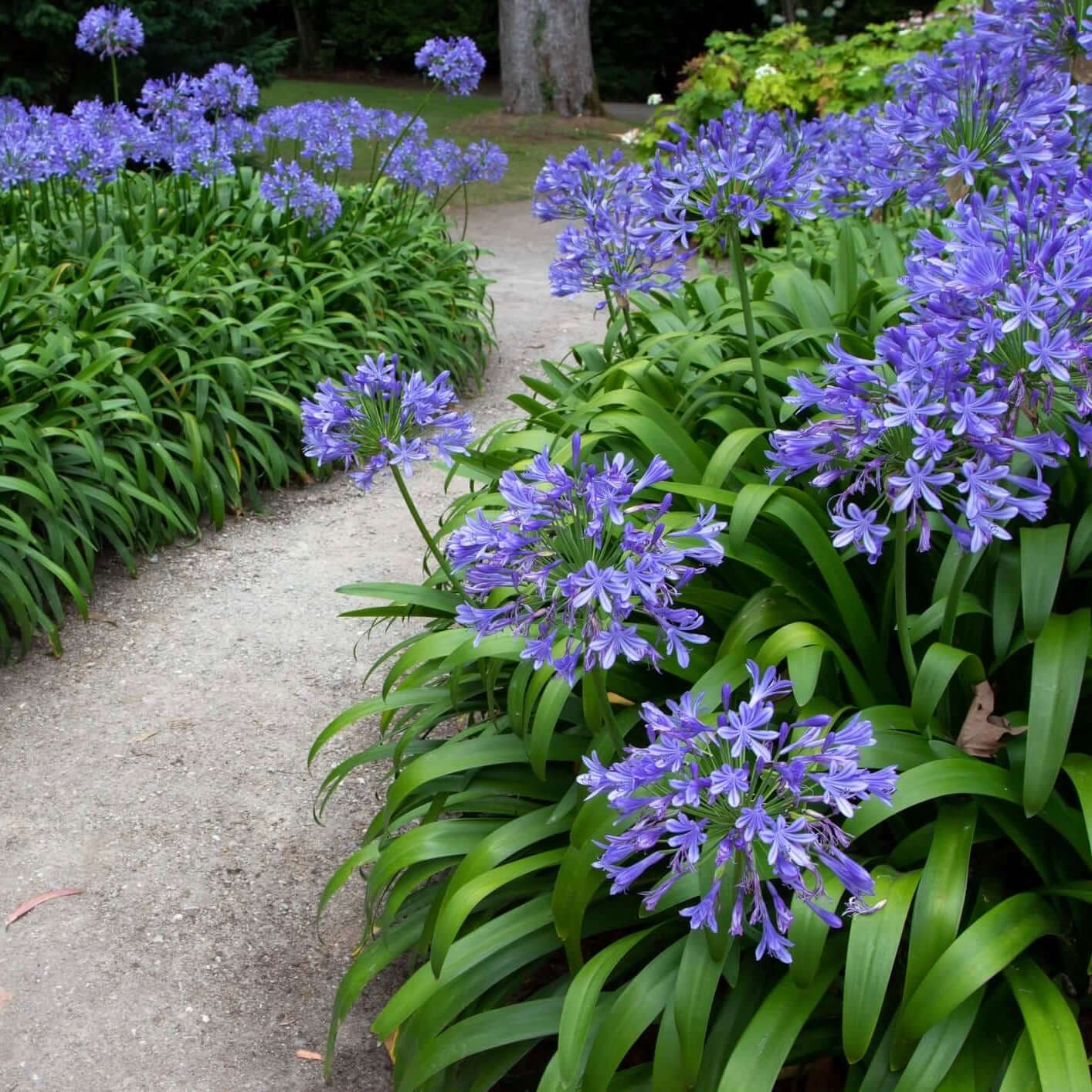Agapanthus Varieties: Selecting the very best for Your Landscape
Agapanthus Varieties: Selecting the very best for Your Landscape
Blog Article
Understanding the Art of Agapanthus Care: Important Actions for Healthy And Balanced Development and Vibrant Flowers
In the realm of cultivation, the growing of agapanthus stands as a gratifying venture for those that seek to support these elegant blooming plants. From choosing the ideal range to understanding pruning techniques, the journey towards growing thriving agapanthus plants is complex and holds the key to opening the full capacity of these organic treasures.

Picking the Right Agapanthus Selection

When selecting the ideal Agapanthus selection for your yard, take into consideration variables such as environment suitability, blossom shade, and development behavior. Additionally, think about the climate in your area to make sure the Agapanthus selection you pick can prosper in your certain problems. Understanding the development behavior of different Agapanthus varieties is essential for correct placement within your yard.
Ideal Growing Conditions
Thinking about the optimal environmental demands is crucial for effective Agapanthus growing. Agapanthus plants are delicate to cold temperature levels and should be safeguarded from frost during wintertime months.
To ensure healthy growth and vivid flowers, plant Agapanthus light bulbs at a deepness of concerning 2-4 inches and space them 8-12 inches apart. Mulching around the base of the plants aids retain dampness and suppresses weed growth.
Watering and Feeding Tips
Keeping proper moisture levels and supplying essential nutrients are essential components in the care program for Agapanthus plants. When it concerns watering Agapanthus, it is crucial to strike a balance. If overwatered, these plants choose constantly wet soil yet are prone to root rot. Throughout the growing season, water deeply when a week, ensuring the soil is well-draining to stop waterlogging. In hotter climates or during durations of dry spell, even more constant watering may be needed to maintain the soil evenly moist. Nevertheless, lower watering in the winter to avoid waterlogged problems.
Feeding Agapanthus is necessary for advertising healthy development and respected blooms. Use a balanced plant food, such as a 10-10-10 formula, in the very early springtime as new development arises. Repeat this application every 6-8 weeks throughout the expanding period. Avoid excessive fertilization, as it can cause lush vegetation at the expense of flowers. Always adhere to the manufacturer's guidelines for correct dilution and application methods. By adhering to these watering and feeding suggestions, you can ensure your Agapanthus plants thrive and generate vibrant, long-lasting flowers.
Pruning Techniques for Agapanthus
Trimming Agapanthus plants at the proper times and with correct methods is essential for maintaining their health and advertising optimal growth and flowering. The optimal website link time to get redirected here trim Agapanthus is in late winter months or early springtime before new development arises.
Deadheading invested flowers can also reroute the plant's power into generating more blossoms instead than establishing seeds. If you want to gather seeds for propagation, leave some flowers to completely dry and fully grown on the plant.
Remember to utilize clean, sharp tools to make specific cuts and minimize the danger of introducing illness. Agapanthus. Regular trimming will certainly help keep your Agapanthus looking neat and healthy while ensuring an abundant display of beautiful blossoms
Handling Usual Bugs and Diseases
After making sure appropriate pruning techniques for Agapanthus, it is essential to attend to usual bugs and diseases that can influence the health and wellness and vigor of these plants. One usual pest that affects Agapanthus is the Agapanthus gall midget.
One more common problem is fungal fallen leave area, which offers as dark lesions on the fallen leaves. To stop fungal illness, make certain good air flow around the plants, stay clear click of overhanging watering, and eliminate any kind of infected fallen leaves quickly. Furthermore, Agapanthus plants can experience from root rot if they are grown in badly draining dirt. To avoid this, plant Agapanthus in well-draining dirt and stay clear of overwatering. By being attentive and taking timely action against parasites and diseases, you can help your Agapanthus plants thrive and generate vibrant blooms.

Conclusion
Finally, understanding the art of agapanthus treatment involves selecting the right selection, offering ideal planting conditions, correct watering and feeding, ideal trimming techniques, and dealing with typical insects and diseases. By following these crucial steps, you can make certain healthy and balanced development and vivid flowers for your agapanthus plants. Bear in mind to on a regular basis keep an eye on and preserve your plants to advertise their general well-being and longevity.
To make certain healthy growth and dynamic flowers, plant Agapanthus bulbs at a depth of about 2-4 inches and area them 8-12 inches apart. By complying with these watering and feeding tips, you can guarantee your Agapanthus plants prosper and generate dynamic, long-lasting blooms.
One typical bug that impacts Agapanthus is the Agapanthus gall midge. Furthermore, Agapanthus plants can suffer from root rot if they are grown in poorly draining soil. By following these crucial steps, you can make sure healthy growth and lively flowers for your agapanthus plants.
Report this page